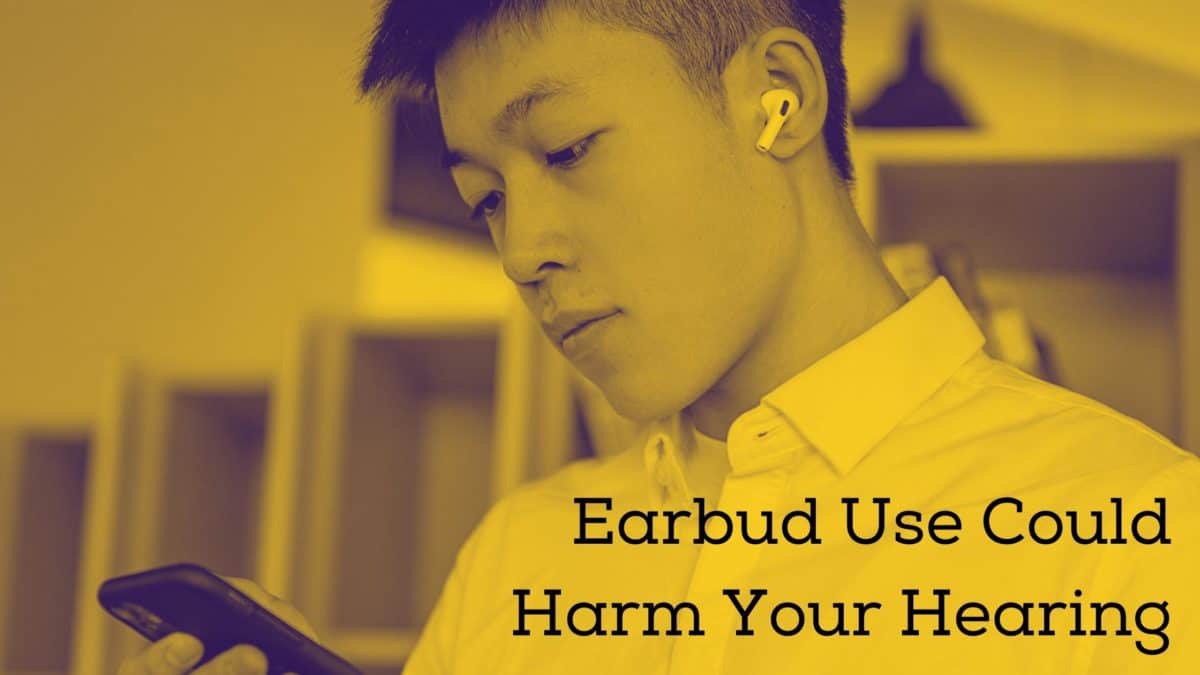- Questions to Ask During Your Hearing Health Appointment - May 16, 2025
- Exploring Alternative Therapies for Hearing Loss - May 6, 2025
- Why Rechargeable Hearing Aids Are Changing the Game for Users - April 27, 2025
Reading has given way to listening in today’s media landscape. Even though the use of video and audio in media and news has increased steadily over the last century, we are still finding ways to incorporate these mediums into our lives safely.
People have received news through television and radio for decades, but those channels have primarily been heard through speakers. When audio is played over speakers, it affects everyone in the proximity, and this communal method of listening keeps the volume at a manageable level.
However, it is possible to play audio files at dangerous levels without anyone else knowing when we project audio straight into the ear canal. We can safeguard ourselves and our loved ones if we keep this in mind. Let’s look at some of how earbuds can affect your hearing, especially when combined with other background noise.
Hearing Loss and Earbuds
Hearing loss is more common in young individuals than in previous generations. When researchers look at young people’s listening habits, they find that they are more prone to use earbuds and headphones for long periods.
The way we utilize earbuds and headphones has also evolved due to streaming technology. Previously, you would have been required to bring a few cassettes or CDs with you on a trip to listen to music, but streaming media allows you to listen for more extended periods than ever before.
Earbuds can also be played at higher volumes than we may expect. Many devices have a maximum volume setting that exceeds 100 decibels. Hearing damage can be caused in a matter of minutes at that volume.
When listening in a quiet area, playing earphones at such volume for more than a moment or two may feel uncomfortable. However, when earphones are used to drown out surrounding noise, we can develop accustomed to the dangerously loud volumes they produce. Consider a train journey on a noisy train. We might be tempted to put in our headphones rather than listen to the loud sound of a subway car. Although these devices may mask background noise, they do not provide the same level of protection as earplugs. Instead, earbuds are turned up loud enough to compete with and add to background noise.
Another potential concern is using headphones while mowing the lawn. Our earbuds contribute to the total decibel level that is entering our ears with the sound of a lawnmower, weed whacker, snow blower, or leaf blower in the background.
Protecting Earbuds from Damage
What can you do to safeguard yourself against the dangers of earbuds?
The first step is to avoid wearing them when there is a lot of background noise. When you discover that a place is loud, it is not the time to use headphones to increase the level. If you wish to listen in these surroundings, you should invest in a pair of noise-canceling over-the-ear headphones. At the same time, these gadgets mute the environment’s sound and play a tone that cancels out background noise.
It’s crucial to keep the volume and length of your earbuds under control when you’re wearing them. A good rule of thumb is to maintain your device’s loudness at or below 70% of its maximum. Take notice of the volume and duration combination as well. Even a moderately loud sound can be harmful if listened to for long periods, as is feasible with streaming technology.
Finally, remember to keep an eye out for the young people in your life. Setting limitations for the young people in your life can help them maintain their hearing ability far into maturity and older age, so don’t be afraid to talk to them about it.
If you know someone with hearing loss or are experiencing it yourself, we can help. Contact us today to set up a hearing test. Even if you have an intuitive feel when the volume is too loud, youngsters may be inclined to test the boundaries if given the opportunity.

